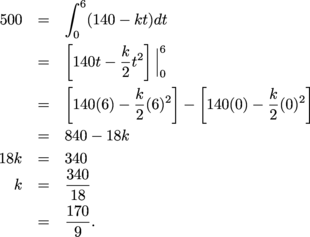

Finding the limits of any graph requires you to look at what is happening at the microscopic level, dissecting the graph into infinitely small pieces and examining what happens as points on a graph get infinitesimally close together. In the world of calculus however, this is far from true. On the surface, these concepts appear to be at odds with one another. In Calculus 1, Business Calculus, or any of your AP Calculus classes, you will also take a closer look at the concepts of limits and infinity.

parabolas), learn to use and apply the different derivative rules, and identify rates of change in velocity and acceleration.
#Calculus problem how to#
Here you will learn how to calculate the slope of curves (e.g. If you're just getting started with basic calculus or intro to calculus, differential calculus is the first order of business.
#Calculus problem series#
Research has now confirmed that Madhava and Nilakantha were responsible for discovering infinite series in calculus, two centuries before Sir Isaac Newton and Gottfried Newbitz were born. Gottfried Newbitz work was more focused on the rate of change in graphs alongside developing the mathematical notation for calculus that we use today. Sir Isaac Newton was responsible for establishing the relationship between the two key topics in calculus: Differentials and Integrals. Recent findings in the past decade however, suggest that this honour must now be split 4-fold to include Madhava and Nilakantha on the throne. As a joint discovery in Mathematics, Sir Isaac Newton and Gottfried Newbitz are credited as the Fathers of calculus for their early work in developing the fundamental concepts, theories and calculus rules we study today.


 0 kommentar(er)
0 kommentar(er)
